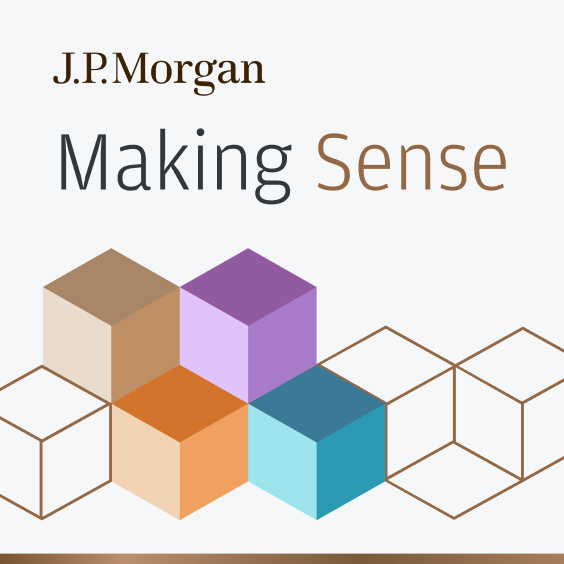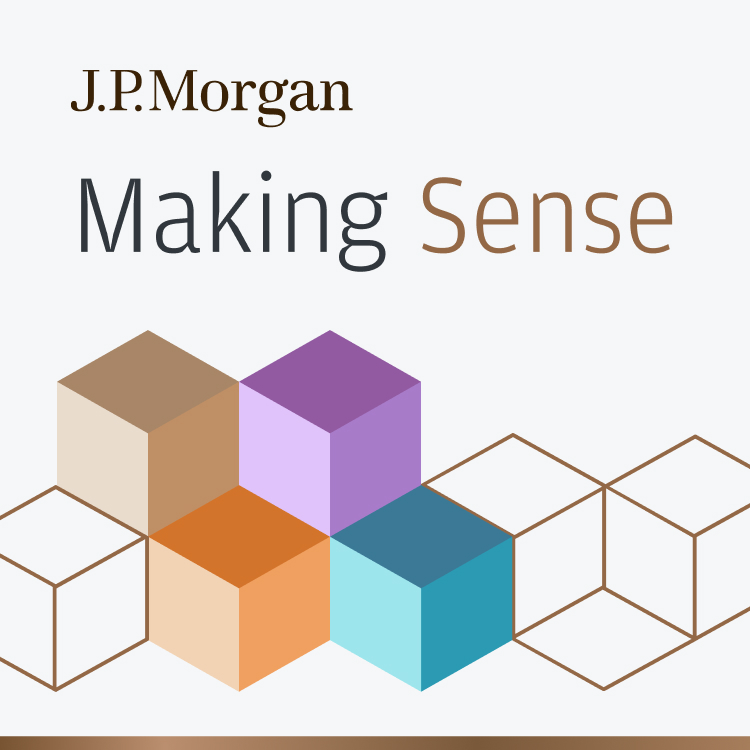For Companies and Institutions
-
Commercial Banking
We provide credit, financing, treasury and payment solutions to help your business succeed. We also offer best-in-class commercial real estate services for investors and developers.
-
Global Corporate Banking
We help clients achieve their long-term strategic goals through financing, liquidity, payments, risk management and investment banking solutions.
-
Investment Banking
Providing investment banking solutions, including M&A, capital raising and risk management, for a broad range of corporations, institutions and governments.
-
Institutional Investing
We support the entire investment cycle with market-leading research, asset management, analytics, execution, and investor services.
-
Payments
Your partner for commerce, receivables, cross-currency, working capital, blockchain, liquidity and more.
Key Links
For Individuals
-
Wealth Management
With J.P. Morgan Wealth Management, you can invest on your own or work with an advisor to design a personalized investment strategy. We have opportunities for every investor.
-
Private Bank
A uniquely elevated private banking experience shaped around you.
Explore a variety of insights.
Key Links
Insights by Topic
Explore a variety of insights organized by different topics.
Key Links
Insights by Type
Explore a variety of insights organized by different types of content and media.
Key Links
We aim to be the most respected financial services firm in the world, serving corporations and individuals in more than 100 countries.
Key Links
- Markets
- The e-Trading Edit
- FICC Market Structure: Uncovering key trends in EM Swaps

TITLE

DESCRIPTION
Market Matters | FICC Market Structure: Uncovering key trends in EM Swamps
[MUSIC]
Meridy: Hi, this is Meridy Cleary from the FICC Market Structure and Liquidity Strategy team here at J.P. Morgan. Today, we're going to delve into the world of emerging markets to talk through some of the key features, drivers, and dynamics of these markets. I'm joined by Avi Berkowitz, who is the head of EMEA, Emerging Market Interest Rate Derivatives Trading. Hi, Avi.
Avi Berkowitz: Hey, Meridy. Good morning.
Meridy: As the largest derivatives asset class, Interest Rate Swaps, or IRS, play a key role in the global financial ecosystem. Usually, these products involve the exchange of a floating rate for a fixed rate and vice versa. IRS can take many different forms. In periods of uncertain rate movements, like we're experiencing right now, IRS helped mitigate some of the ongoing uncertainty. Avi, the growth in emerging market IRS trading activity has been quite something. A combination of new access channels to these markets, technological advances, and policy initiatives have contributed to this increase. From your perspective, what are some of the explanations of this growth?
Avi: Over the past decade or two, we have seen volumes and trading activity increase in EM interest rate swaps. This trend has picked up considerably in the last couple of years. If you look into the new data released from the BIS in November, an OTC derivative activity, we can see there has been a general pickup in volumes across EM IRS markets since 2019. Most notably, Czech, Poland, and Korea notionals have essentially doubled since pre-COVID.
Meridy: That's interesting. Why do you think that is?
Avi: I would say this general growth comes down to two key things. Firstly, we are seeing more active central banks in EM. Some EM central banks held rates at or close to zero for a while, but since COVID, have suddenly become more active, which has increased demand and overall trading. We are seeing this in Czech and Poland markets, for example, where more active central bank policy has been driving trading. This explains the rise in average daily volume. EM central banks have been more active compared to their G10 peers, both by hiking first. Now some have started to ease already ahead of their G10 peers.
Brazil, Chile, Hungary, and Poland, for example, have started cutting rates already. This has driven an increase in short end trading. Most EM traders express their short end views using FRAs. These are essentially three month interest rate swaps. Unlike in euro or dollar, there are no liquid short dated interest rate futures. FRAs are used to express short dated views in EM. Second, a trend we have seen is an increase in relative value trading by hedge funds and real money clients. It used to be the case that clients use EM IRS mostly for directional trading. Now, clients are trading liquid emerging markets similar to how they trade G10 really by using IRS for relative value trading.
Meridy: As markets adapt to new technologies, a key market structure trend that we've observed is the electronification of markets. EM IRS trading has also followed this trend. Avi, from your seat, what are some of the factors contributing to this?
Avi: One of the main drivers of this is that banks are offering more electronic liquidity in EM. Another notable trend is the growth in systematic trading within emerging markets. These market participants, which deploy a range of automation strategies, are increasingly making up a larger portion of the overall trading landscape. These accounts mainly trade based on models, meaning it's low touch trading, making them well suited to electronic trading.
Meridy: Another observation that we have seen is the general increase in the sizes being traded electronically. While we'd expect the concentration of trading to be in the smaller tickets, we're actually seeing this shift.
Avi: Yes. Up until recently, I would say the typical average DV1 in E was less than 5k. We are now, however, seeing significantly more being traded in the 5 to 10k DV1 bucket and even 10 to 15k buckets. We expect this trend to continue towards the 20 to 30k bucket. What does that mean? It tells us there's increasingly more comfort and confidence in trading EM IRS electronically.
Meridy: Agreed. We're also seeing changes in the protocols being used in these markets, right?
Avi: For sure. We have noticed an increase in demand by clients for RFM or requests for market where the client asks for a two-way price. This means that clients can trade electronically and do not have to show their trading direction. Another development is that compression trading is being increasingly used in EM IRS. This is known as list trading. It allows a client to trade on a PV or Present Value as opposed to a rate. Whereas through voice execution, clients would typically go through a two-step process. In other words, first enter into a new trade to hedge the existing risk, then ask for a PV calculation to unwind the old trade. On E, this can be done in one step via list rates. The client would ask for a compression price priced as a present value.
Meridy: Something else that we've been looking out for is the global transition from live [unintelligible 00:05:36], which has led to a shift in IRS trading. Looking ahead, emerging markets will have their own transition to risk-free rates or RFRs in the coming years, which could definitely help drive EM IRS popularity even further.
Avi: Yes. One of the struggles felt by emerging market participants was the difficulty in finding a stable benchmark or fixing rate. Now, we are seeing some emerging markets either currently transitioning or planning to transition into RFRs, which will likely spur more trading opportunities. We're already seeing global clearinghouses going live with some new rates, and we expect Mexico and Israel to go live with their new RFR rates next year. For emerging markets that did not have a reliable libel fixing, the move to RFRs can increase trading even further. A good example of this is Turkey. Now with the Turkish Lira overnight reference rate, also called the TLREF, we have seen an increase in client interest to trade Turkey, given a more reliable fixing rate to express interest rate views.
Meridy: Thanks, Avi. There are certainly a number of elements here at play. Thank you so much for your time today.
Avi: Thank you. Pleasure.
Meridy: To our listeners, please stay tuned for more FICC Market Structure episodes on Making Sense. We recently released a report for clients on some of these EM IRS dynamics. Should you have any questions, please reach out to your J.P. Morgan sales representative. Have a great day.
Female Speaker: Thanks for listening to Market Matters. If you've enjoyed this conversation, we hope you'll review, rate and subscribe to J.P. Morgan's Making Sense to stay on top of the latest industry news and trends. Available on Apple Podcasts, Spotify, Google Podcasts, and YouTube. The views expressed in this podcast may not necessarily reflect the views of JPMorgan Chase & Co. and it's affiliates, Together J.P Morgan, and do not constitute research or recommendation advice or an offer or a solicitation to by or sell any security or financial instrument.
They're not issued by J.P Morgan's research department but are solicitation under CFTC Rule 1.71. Reference products and services in this podcast may not be suitable for you and may not be available in all jurisdictions. J.P. Morgan may make markets and trade as principal in securities and other asset classes and financial products that may have been discussed. The FICC market structure publications, or to one, newsletters, mentioned in this podcast are available for J.P. Morgan clients. Please contact your J.P. Morgan sales representative should you wish to receive these. For additional disclaimers and regulatory disclosures, please visit www.jpmorgan.com/disclosures. Copyright 2023 J.P. Morgan Chase and Company. All rights reserved.
[END OF AUDIO]
You're now leaving J.P. Morgan
J.P. Morgan’s website and/or mobile terms, privacy and security policies don’t apply to the site or app you're about to visit. Please review its terms, privacy and security policies to see how they apply to you. J.P. Morgan isn’t responsible for (and doesn’t provide) any products, services or content at this third-party site or app, except for products and services that explicitly carry the J.P. Morgan name.
